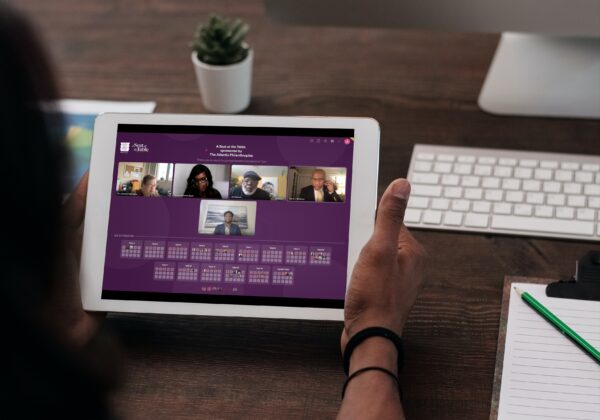Blog Insights
Capture the Power of an In-Person Event Virtually

It was March 2020. The Smithsonian National Museum of African American History and Culture (NMAAHC) was planning the next installment of their already-successful and well-attended event, “A Seat at the Table.” The event brought people together in the museum’s Heritage Hall for an evening dinner, panel discussion, and table discussions about social justice issues affecting the African American community. It was a lovely evening that inspired rich conversation.
As we all know, then the world shut down.
Instead of pausing the event, NMAAHC saw a new opportunity to create a virtual version of the event that achieved new goals and continued the mission of this amazing event.
Forum One supported NMAAHC to conceptualize, visually brand, and help execute the virtual version of “A Seat at the Table” in February 2022. I was thrilled to share the story alongside the program creators, NMAAHC’s Dierdre Cross and Leslie Walker, at the recent MuseumNext virtual conference.
Taking “A Seat at the Table” virtual
The energy of live speakers and meaningful conversations fostered by face-to-face communication is hard to replicate in virtual spaces. “A Seat at the Table” presented even more layered challenges because the discussion topics required a level of trust between participants, trust that NMAAHC carefully built in the design of the in-person event.
In-person, participants mingled over cocktails, then sat together at tables and shared food served family style. Inspired by Langston Hughes’ poem “I, too,” the event welcomes everyone to the table equally. The process of sharing the meal and conversation is central to the event experience.
For the first virtual version of “A Seat at the Table” in 2020, NMAAHC used Zoom for the experience. Though managing breakout rooms was challenging on the platform, and it was hard to shake the feeling of a “work call” no matter how smooth the technology ran. When considering this year’s event we knew a new virtual meeting platform was needed, we vetted several tools and found success with Social Hour, which managed to replicate the grouping of participants by tables and provided an interface for visuals and branding that created a cohesive look and feel.
The event team sent meals to all participants in the U.S., which was a large logistical piece for the virtual event. During the event, panelists “dropped in” to the virtual tables during the discussion, which effectively provided an interaction above and beyond the in-person event between tables and speakers. The conversations were rich and meaningful and people raved about their in-home meal.
3 actionable steps for a successful virtual event
“A Seat at the Table” is undoubtedly unique, but it offers lessons to any institution seeking connection to diverse topics in a virtual space.
1. Carefully curate topics and participants
For NMAAHC, the idea of “A Seat at the Table” happened conceptually before the museum even opened in 2016. There was always the idea that the museum would provide a forum for issues around race and identity and could provide a comfortable place for people to feel welcome, among chosen family friends, to talk about issues that are both contemporary and historic.
Online and in-person events are successful when they’re deeply aligned with the mission of the organization. We carried the museum’s vision through a creative brief that centered on the priorities of the organization and event—“welcoming” was a keyword, for example, which we used as a guiding principle in the design of the event and selection of speakers.
2. Understand resources and assign roles
Organizations need to understand their own technical capability. The availability of resources, funding, and personnel will affect the scale of an event, but should not affect the quality. Strive to create the very best experience with the resources you have available.
It’s critical to have intention about what roles are important and how to fulfill them. Having table facilitators ready for technical support, and requesting panelist participation in table discussions, for example, were priorities for the event which required advanced planning and available staff.
3. Set the tone with your event visuals
We created an updated visual brand for “A Seat at the Table” which was featured throughout the virtual event platform. For your event, thinking through everything from the color palette to pre-roll video to on-screen language sets a tone for the event that draws participants in and keeps them engaged. It helps them break away from any feeling of a “work call” and participate more fully in the conversation.
Most importantly, NMAAHC had a clear vision for the event and its outcomes. For other museums, libraries, or institutions, working from a vision and exploring the technology and resources that best meet that vision is a framework for event success, in person or online.